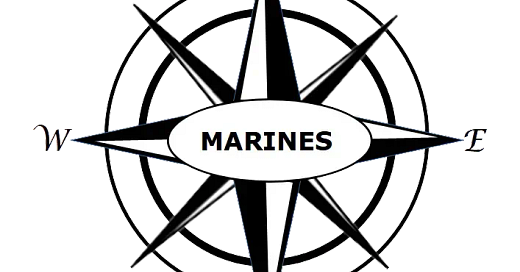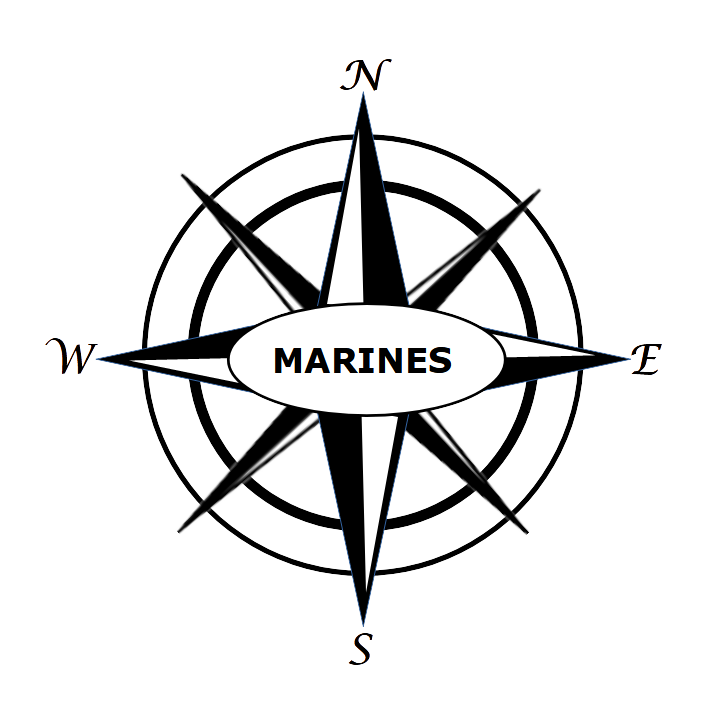Compass Points - Maneuver?
Maneuver or missiles?
April 17, 2025
.
Maneuver or missiles? Which should the Marine Corps be focused on?
For the last several years, the focus of Marine senior leadership has been on missiles. For example, a Marine NMESIS launcher from 3d MLR in Hawaii will take part in this year's Pacific exercise, Balikatan 25.
.
---------------
---------------
The NMESIS system, fielded by the U.S. Marine Corps’ 3rd Marine Littoral Regiment (3d MLR), introduces an advanced ground-based maritime strike capability specifically designed for littoral operations. It integrates the Naval Strike Missile (NSM), a stealthy, long-range precision weapon capable of penetrating enemy defenses and striking naval targets at distances exceeding 185 kilometers, with the Remotely Operated Ground Unit for Expeditionary (ROGUE) Fires—an unmanned launcher vehicle mounted on a Joint Light Tactical Vehicle chassis. This platform provides mobility, survivability, and precision strike capabilities, enabling forces to conduct sea denial missions from remote or contested islands.
. . . In Balikatan 25, NMESIS will be used in simulated maritime strike operations across these territories—areas of significant strategic value due to their proximity to the South China Sea and the Western Pacific. U.S. and Philippine Marines, supported by U.S. Army aviation and Air Force airlift assets, will airlift and position NMESIS launchers across island terrain, working together to establish Fires Expeditionary Advanced Bases. These locations serve as launch points for simulated long-range anti-ship strikes. Although no live missiles will be fired, the exercise will validate key aspects of deployment, targeting, and coordination in real-world terrain under realistic scenarios.
-- Defense News Army
---------------
---------------
.
The NSM, Navy Strike Missile, is an aging subsonic missile with a range of only about 100 nautical missiles. The Marine Corps has few NSMs and few launchers. For years the plan has been for the Marine Corps to establish a string of missile units off China's coast before hostilities. Then, all the missiles units would move from island to island to island, keeping China off balance. In five years, the Marine Corps has yet to place any operational missile units on islands off China's coast. A big part of the problem is Pacific island nations do not want to risk China's anger by allowing the US Marine missile units to establish permanent bases on their territory.
In this year's Balikatan exercise no Marine missiles will be fired. It would be best if the Marine NMESIS system was setup on the actual islands where the Marine operational missile units will soon be based, but the Marines have no missile basing agreements with the Philippine government. In addition, there are tremendous logistical problems with placing Marine missile units on Pacific islands.
It would be a step forward for the Marine missile units in this year's Balikatan if the Marines actually practiced shooting and moving the NMESIS system.
.
1. Place the NMESIS on the island. Setup. Prepare to fire. Fire. Move to another island.
2. Place the NMESIS on the island. Setup. Prepare to fire. Fire. Move to another island.
3. Place the NMESIS on the island. Setup. Prepare to fire. Fire. Move to another island.
.
Unfortunately, the NMESIS will not be fired during the Balikatan exercise and it is unlikely the NMESIS unit will be displaced again and again and again as it needs to be.
The logistics of moving any missile unit can be beyond difficult.
How difficult?
A related logistical missile challenge was recently faced by US Air Force airlifters.
.
---------------
---------------
US military cargo airlifters recently made over 70 cargo flights from the Pacific to the Middle East, loaded with military hardware, in concert with other US forces moving into the region. These dozens of flights were apparently required to transport one Patriot air defense battalion from the INDOPACOM theater to the increasingly volatile conflict zones in the Persian Gulf.
-- 19FortyFive
---------------
---------------
.
Over 70 cargo flights?
Obviously, a Patriot battalion and Marine NMESIS units are not the same, but without sufficient logistics neither can accomplish their mission.
In theory, the Marine Corps is focused not on missiles but on maneuver warfare, a high speed form of offensive warfighting that seeks to shatter the enemy's resolve.
.
---------------
---------------
If the aim of maneuver warfare is to shatter the cohesion of the enemy system, the immediate object toward that end is to create a situation in which the enemy cannot function. By our actions, we seek to pose menacing dilemmas in which events happen unexpectedly and more quickly than the enemy can keep up with them. The enemy must be made to see the situation not only as deteriorating, but deteriorating at an ever-increasing rate. The ultimate goal is panic and paralysis, an enemy who has lost the ability to resist.
Inherent in maneuver warfare is the need for speed to seize the initiative, dictate the terms of action, and keep the enemy off balance, thereby increasing their friction. We seek to establish a pace that the enemy cannot maintain so that with each action their reactions are increasingly late—until eventually they are over-come by events.
-- MCDP -1, Warfighting
---------------
---------------
.
Maneuver or missiles? Which should the Marine Corps be focused on?
In pursuit of operational missile units off China's coast, the Marine Corps has badly damaged the Corps' ability to conduct world wide, combined arms, crisis response. If more missile are needed, it would have been much wiser to add missiles to the global 9-1-1 MAGTF. It was never prudent to damage or delete so many combined arms units, equipment, and capabilities.
Compass Points salutes all the Marines and others participating in Balikatan 2025, and salutes all the Marines and friends of the Corps working to restore and enhance the global, combined arms, Marine MAGTF.
.
- - - - -
.
Defense News Army - 04/17/2025
Breaking News: U.S. Deploys NMESIS Anti-ship Missile System to Northern Philippines Amid Rising China Tensions.
.
- - - - -
.
19fortyfive - 04/17/2025
70 Flights Later: The U.S. Military Just Airlifted an Entire Patriot Missile Battalion Out of Asia
The U.S. military recently conducted over 70 cargo flights to move a Patriot missile defense battalion from the Indo-Pacific region to the Middle East amid escalating threats.
By Reuben Johnson







Once again, I am wondering where and how the Marines are going to get 18 missiles the vehicles for transport, and something to reload the missile truck onshore. If we use Air force C 17s, we need a place to land them. Surly driving all of these vehicles would be noticed. If we bring them onto a beach, we had better select one that can handle these logistic loads, but then we have the load, shoot, pack up and get our butts off to another island and repeat. Someone would surely notice all that driving around and there is again the logistical problem of fuel, beans, and ammo. Another problem is that the NEMESIS only has a 100 mile range. Better to use Naval (including the Marine air) and Air Force aircraft and shoot from long range with the new high precision long range and faster missiles. You might use some troops (Marine Recon, or Navy Seals) landed from a Submarine ala WWII, or from a small fast ship to do the recon and get out the word. We could actually support that both logistically and get them on and then back off the island once the target is taken care of.
FD2030 relegated the Corps to an island missile asset and rendered the Corps impotent and ineffective to respond to any threats in any place, and ruined our MAGTF capabilities! Our only salvation and restoration lies in VISION2035 to restore our MAGTF lethality and capabilities!!!!